Midday Martinis With Paul Feig
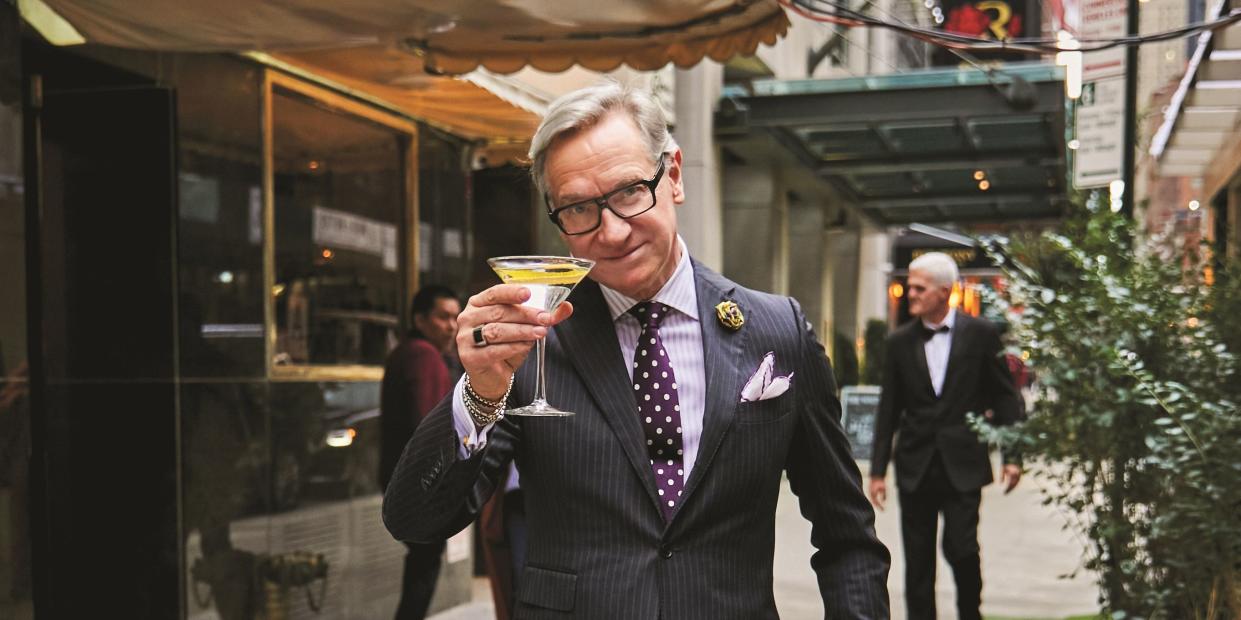
- Oops!Something went wrong.Please try again later.
There are two versions of New York City. There’s the New York City I observe on my commute uptown. People waiting on the 6 line with AirPods popped in, scrolling their phones as they stand in front of an advertisement for the next season of The White Lotus. And as I emerge on the Upper East Side, it’s a perfect fall day—ideal for the group sharing espresso martinis over brunch in the outdoor dining shelters that popped up across the city during Covid.
Then there’s the other New York City. This one, tucked away inside of the Carlyle Hotel on the Upper East Side, is timeless. Despite it being noon, the iconic bar—Bemelmans—is dimly lit and adorned in rich colors. Nestled in a corner booth is Paul Feig, who looks pretty timeless himself. Dressed in a three piece suit and donning his signature dark-rimmed, rectangular glasses, he looks like he could be plucked from any era of New York City.
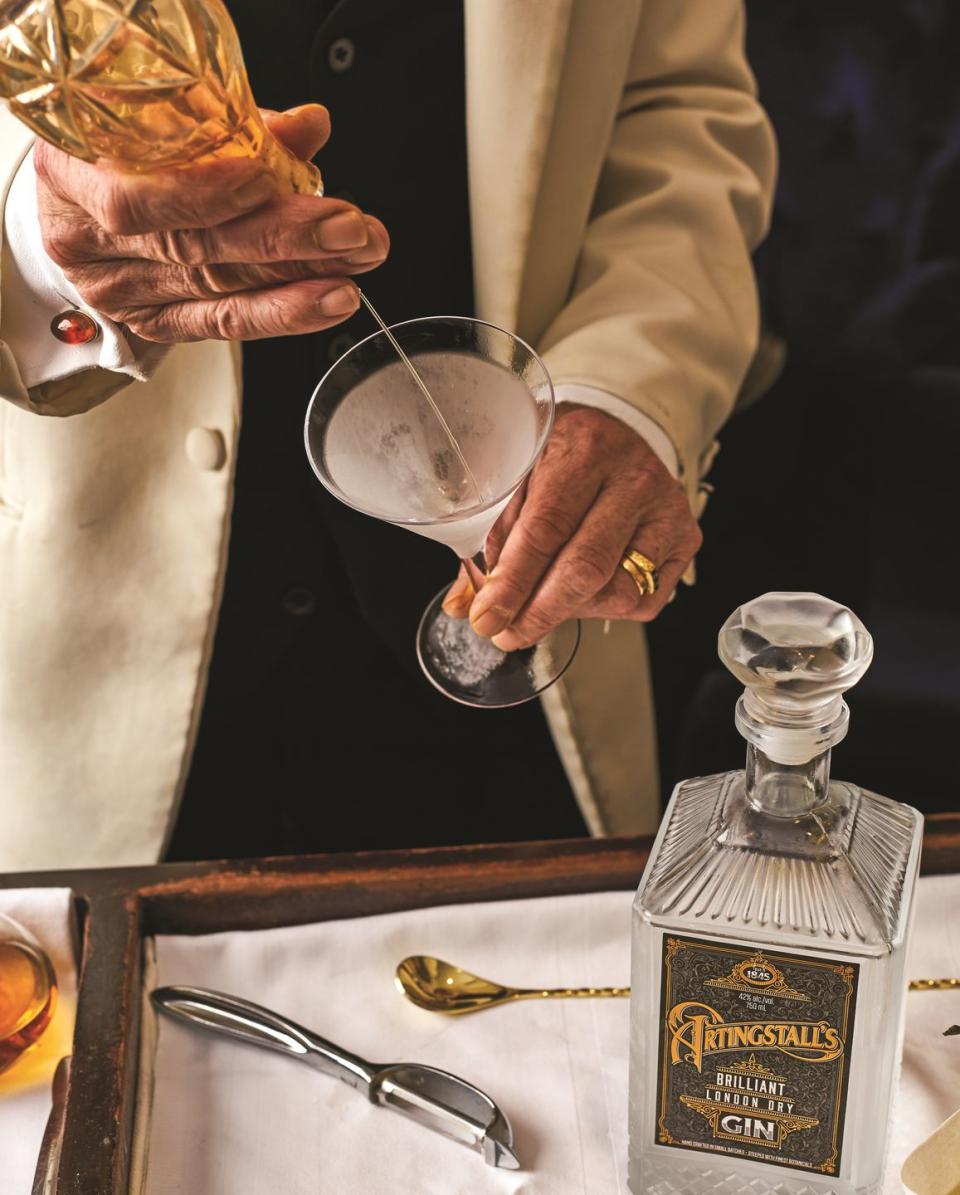
Feig’s work runs the gamut of TV, film, and memoir. At the turn of the millennium, he gifted the world incredible laughs, creating the cult classic, Freaks and Geeks. He’s directed a slew of TV shows, from The Office to Mad Men, and then he went on a run of Melissa McCarthy hits, directing Bridesmaids, Spy, and the ever-controversial all-female Ghostbusters. His latest feature, The School for Good and Evil, debuted on Netflix just before Halloween. But the reason we have gathered here in Timeless New York City is to discuss his new cocktail book, Cocktail Time!: The Ultimate Guide to Grown-Up Fun.
As a white coat waiter comes to take our order, I turn the reins over to him. After all, he’s the cocktail maven, having ushered his Instagram followers through the pandemic with a bevy of cocktail concoctions. For 100 days at the start of the Covid-19 pandemic, Feig entertained social media fans with cocktail recipes—a number of which he was discovering for the first time. People asked if he’d start writing them down, which turned into Cocktail Time!, out now. To start our conversation, Feig goes with his favorite: two gin martinis, with a twist. And with that, we’re off. This interview has been edited and condensed for clarity.
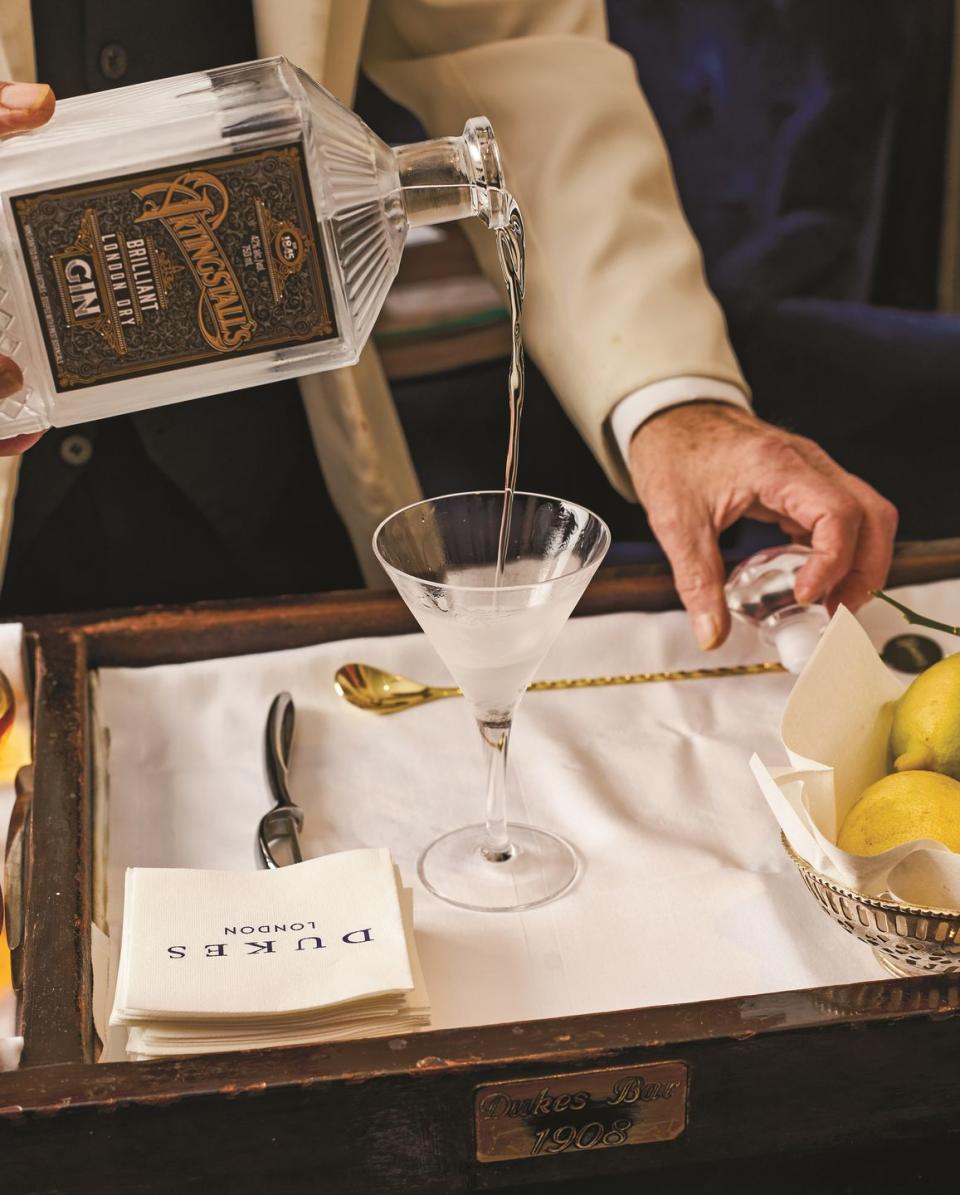
Esquire: Cocktail Time!: The Ultimate Guide to Grown-Up Fun is a cocktail recipe book but it also feels like a love letter to your career thus far. Did you intend to write something that felt so personal, including stories from so much of the work you've done?
Paul Feig: Well I didn’t set out to do that. It's funny with this because I wanted to get the recipes down and then I wanted to give a lot of advice just on drinking, and how to face drinking in adult life. But I’ve been around long enough to know you're gonna get the note, "Well, how is it personal to you?", so I thought, okay let me get ahead of it.
There's something so personal about food.
It's a tribal need. It’s something we all have to do, unless you're just somebody who just hates food, which is very hard to find. It's funny, there's a podcast I love to listen to in London called Off Menu. It’s these two really funny comedians whose concept is they have a dream restaurant, and so, whoever comes in, whoever the celebrity or the interviewee is, they say what's your dream starter, main, dream side dish, drink, all that stuff. It's just it's the most fun thing to listen to. Everybody’s so passionate about what they like.
You ordered us a gin martini. Tell me about why. I, like a lot of people, have a fraught relationship with gin.
A gin martini is a real martini. A vodka martini, as you see in my book, is an imposter. Twenty-five years ago, I didn't like gin either because I had the weird experience with it, you know, like we all do as a kid. But when I read about the real martinis, gin martinis, I was like, I gotta teach myself how to like gin. And that was back when it was like Beefeater and, you know, the really traditional juniper, piney things.
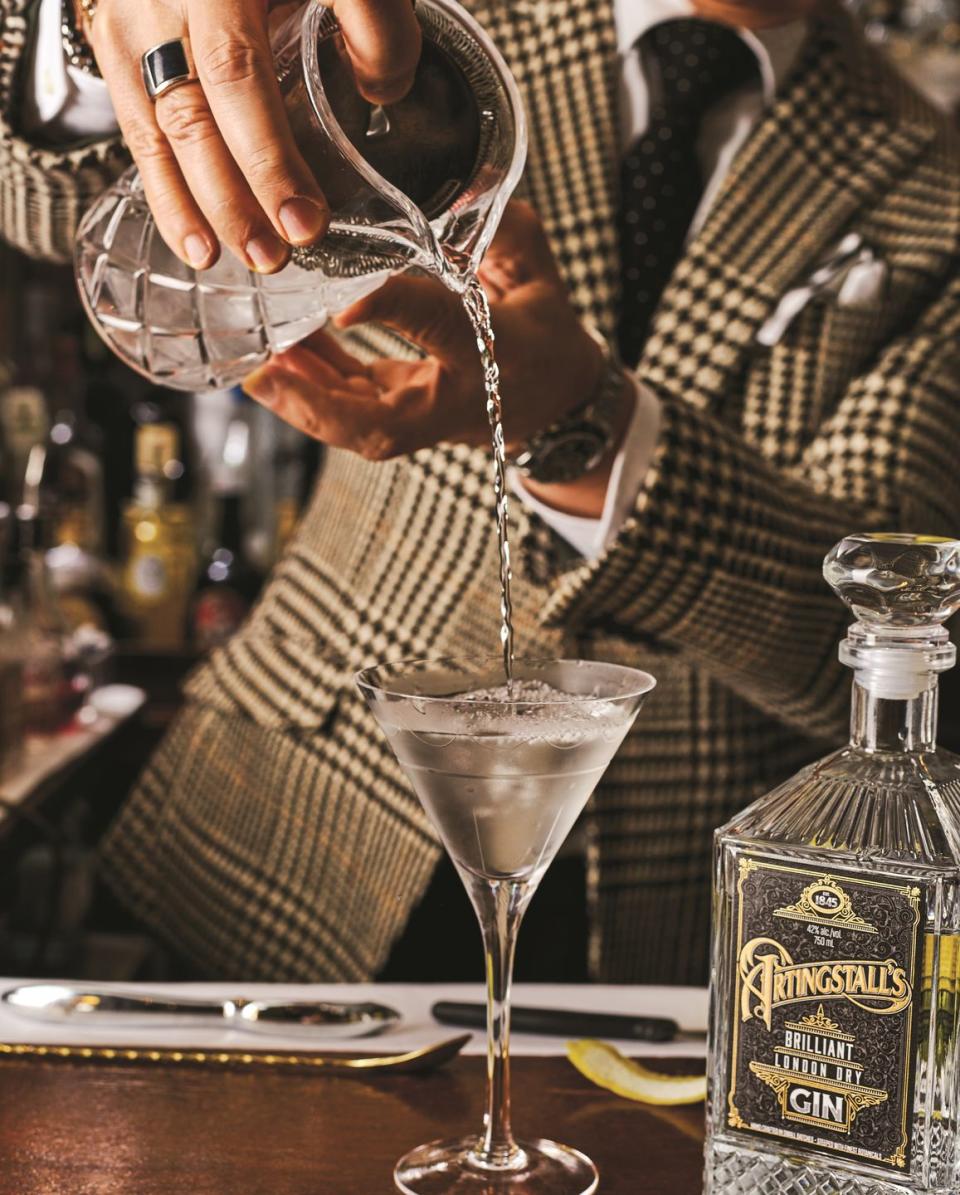
I know you had the Instagram show, but beyond that, what about this moment feels like a cocktail book was the right move?
It was honestly knowing we were coming out of the pandemic. Hopefully. Knock on wood. Just like with the Spanish Flu 100 years ago—for two years, it shut the whole country down, which resulted in the roaring '20s. People just went wild. So it was just this feeling of like, We’re about to come into that, and people might want to start throwing cocktail parties again. Maybe we'll bring back the glory days, those really glamorous ones—you know, the Truman Capote ones. Put on your tuxedo and come over to our apartment and sit around, have drinks, and cool conversation.
This book isn’t your only big project right now. You recently had The School of Good and Evil debut on Netflix—which, while it is a great popcorn movie, it also gets at this ambiguity between good and evil. Agatha is supposed to be a witch, but turns out to be a bastion for good. Sophie is certain she’s a princess but largely turns out to be an agent of chaos. All of that feels particularly appropriate right now.
First and foremost, I love the relationship between these two girls and female friendship: you know, true love's kiss and all that. It was really what drew me to it, but then it was definitely this meditation on "good" and "evil" and that polarization because like you said, I mean… look at our country. That's why we're in the place where we are right now. It's just like "you're good, you're evil" and there's nowhere in between. I really like that Agatha is the one that comes in and kinda goes like, this is crazy, we’re just human.
Exactly. For the “bad” archetype to be the one who says, “We are too complex to be one thing” is such a major moment in the film.
Exactly. Stop looking at black and white. Look at gray. Let's just get back to being friends who have differing opinions.
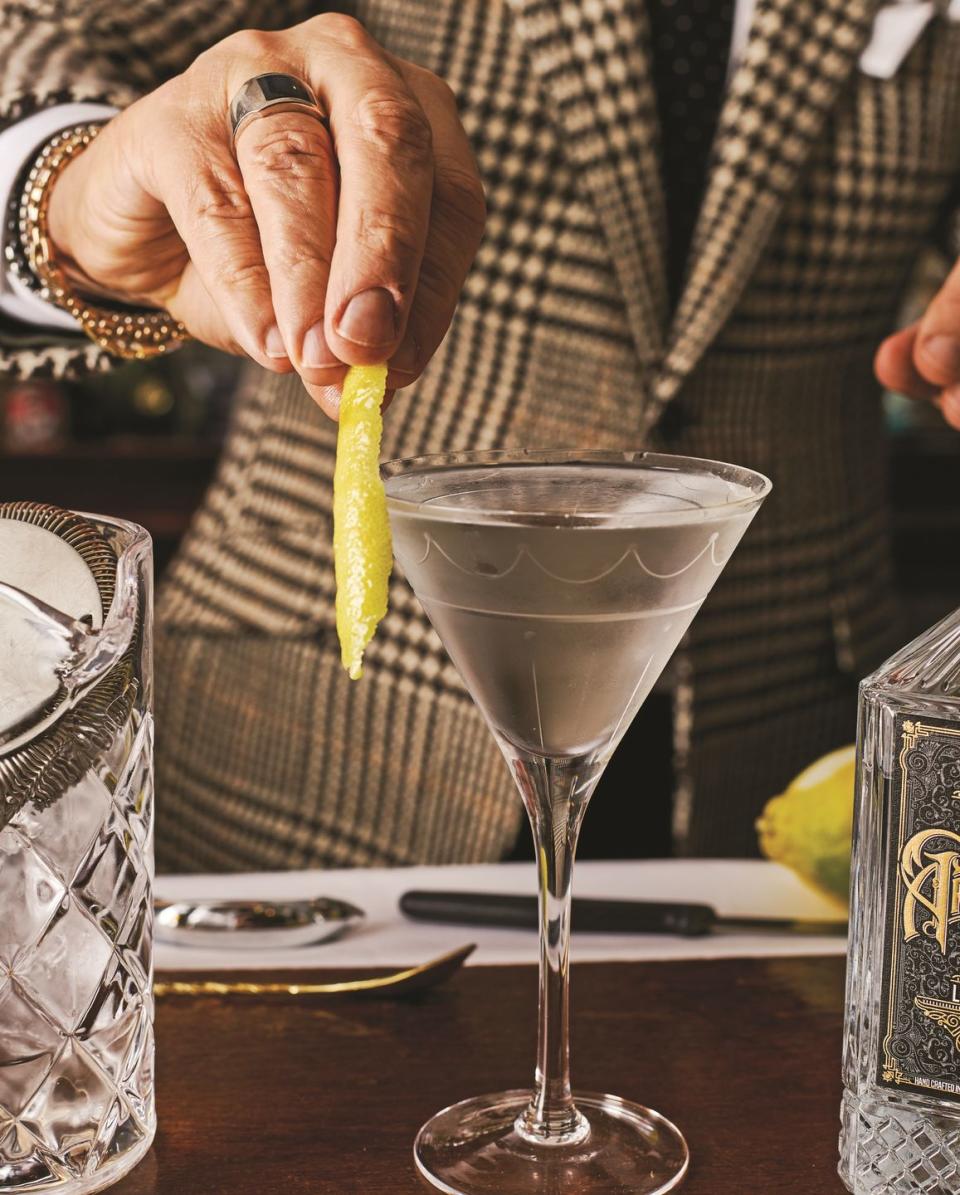
Adapting adored, young adult novels is a dicey game. You immediately have this fandom who is waiting on this film with bated breath. But, even if you have a stacked cast like you do here with Kerry Washington and Charlize Theron and Laurence Fishburne, it’s still a lot of pressure come premiere day.
It's nerve wracking. Having witnessed fan-service before and having a blow in my face with Ghostbusters, you kinda have to go, okay, there’s fans and fans are very, very passionate, but the good thing about this is…it's got a huge fan base, but it's not Harry Potter.
As for the cast, it was really harmonious. I knew Charlize because we worked on Arrested Development back in 2005 together. I directed her a couple times so we always stayed friendly. And Michelle Yeoh is one of my best friends, so I had a real comfortable thing going on with them. But Sofia Wylie, who plays Agatha, I didn’t know at all. She gave the most amazing audition, and I said, we have to hire her, and then I found out she has such a big following from High School Musical and TikTok. The first time I saw Sophia Anne Caruso was on Broadway, as the star of Beetlejuice. They bought their A-game and came in ready to work.
You mentioned Ghostbusters. The response to that film was so unforgiving, largely because of its all-female cast. Do you think the Internet and fan-service has gotten in the way of storytelling?
It's definitely made us accessible to them. All you gotta do is tag me in whatever you wanna write on Twitter and it’s in my face, you know? The world didn’t used to be set up that way. You used to send mail to an assistant or a studio that would then weave through it or get it to you, and then odds it’ll never get to you or get to you late…
To hear the validation is wonderful, but getting shit on, that’s not as much fun. But. I don't think it's a bad thing. The thing is, the media—and I love the media, but—the media keeps amplifying small numbers of people who just sound like they’re larger than they are, and every time it’s like, fans online are upset about… It's like okay let's look at how many people have been doing this versus all the other people who are supportive and excited or just don't care. It’s anti-democratic, in a way.
We really went into the zeitgeist, because Ghostbusters is such a big property. It became such a splashy story to keep talking about that they just kept talking and talking and talking. It turned the whole movie into that for a lot of people.
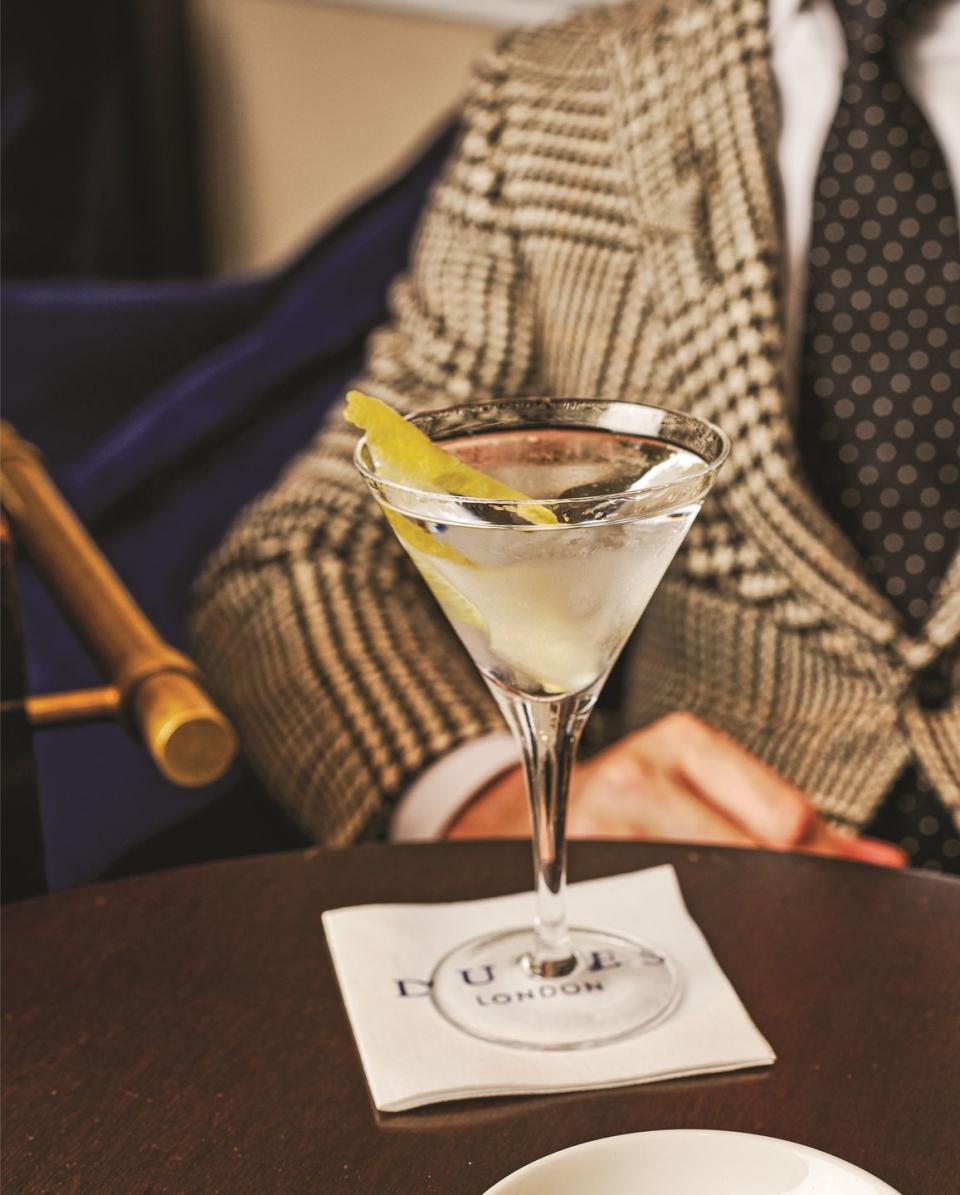
Which is unfortunate because you had this incredible run of films with Melissa McCarthy, starting with Bridesmaids. How did that relationship come to be?
It literally came because we were auditioning everybody in town for Bridesmaids, I mean we saw everybody, and the Megan part was always a really funny part. We knew it was a key part, so we were like, we gotta really nail this. We were right at the end of the process and we still don’t have Megan and it was Kristen [Wiig] and Annie [Mumolo]. They were like, you have to see our friend, Melissa, she's in the Groundlings. People line up around the block when she's performing, and I said okay let's see her. So she came in and did that audition and it was so different from what anybody else had done. I spent the first like 15 seconds of her audition going, what is she doing? And then suddenly, I go, oh my God, that's hilarious!
She walked out thinking she had completely blown it and beat herself up on the way home, and we were all inside high-fiving like, we got her, we got her!
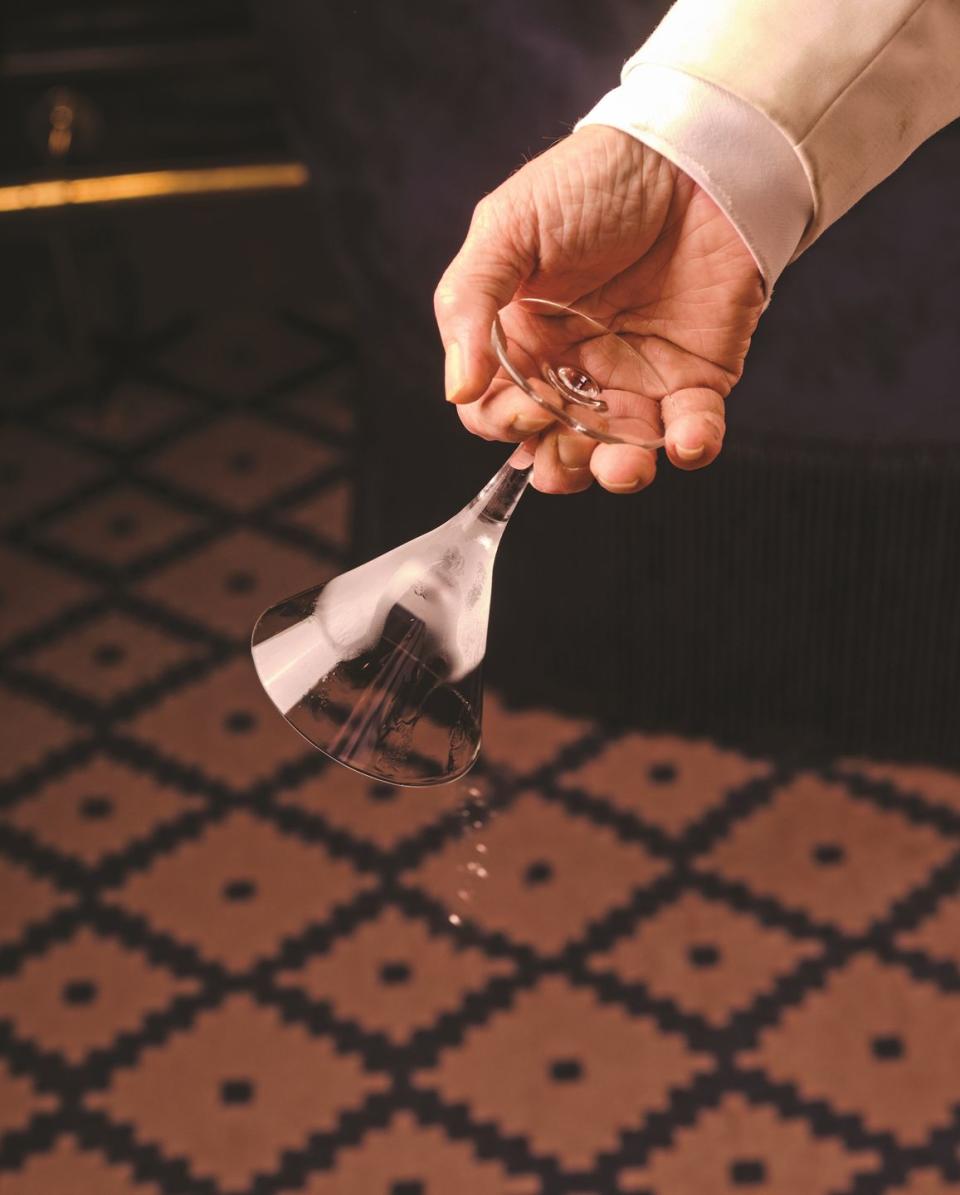
Now, a very important question to finish up. You’re a martini purist, so I’d not be doing my job if I didn’t ask: thoughts on the espresso martini?
Well, since I like them, I actually don't have a problem with them. I was more against the martini menu phase which is basically apple martinis and a million other things—but those are just drinks in a martini glass. They're not martinis. And so technically, yeah, an espresso martini is not a martini. But they're such crowd pleasers that I never wanna be the spoilsport.
I have a real hatred of that kind of thing—the people who judge other people’s things that they like. I hate people who shit on other people's good time or just something they like, so, I'm all for it. I also make a very good espresso martini, so there you go.

This is the famous martini they make at Dukes Bar in London, which is in Dukes Hotel, a small hidden gem off St. James’s. The Dukes martini was invented because a martini must be very cold to be good. In the quest for the coldest martini possible, Salvatore Calabrese first came up with this method in the mid-1980s. But it was my good friend and bartender extraordinaire Alessandro Palazzi, the head bartender at Dukes since the mid-1990s, who perfected it and made it come to life.
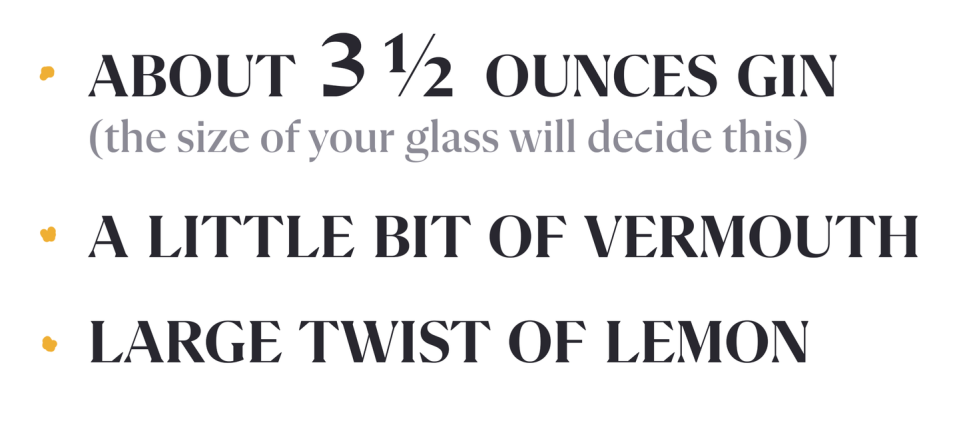
IT’S really quite simple. Unbelievably simple, actually. But it requires prep. First, put a bottle of your favorite gin and a martini glass into the freezer several hours before you plan on making your drink. When the gin is ice-cold through and through, take the glass and gin out of the freezer and immediately pour a small amount of vermouth into the glass. The vermouth doesn’t have to be cold, although it can be. If it’s not, the frozen gin will be cold enough to make up for it.
NEXT, turn the glass with it tipped at an angle so the vermouth coats the walls of the glass as you slowly spin it one full revolution. Then, discard the rest of the vermouth from the glass into the sink or, if you want to be like Alessandro, dump it out onto the carpet. (This is Alessandro’s signature move, which he pioneered. If you do it, it is required that you say “Thank you, Alessandro” each time, in honor of him.)
NOW, before the glass has a chance to defrost, pour in the frozen gin. Fill the glass right to the top, leaving just enough space that you don’t spill all over the place when you pick up your drink. (Although when Alessandro makes a martini, he can fill it right to the very rim and set the glass down in front of you without spilling a drop. The man has the steadiest hand in London.)
NEXT, take a good-size lemon and, using a very sharp knife or vegetable peeler, cut off a long piece of peel, otherwise known as a twist. (You want to make sure the twist isn’t too thick. If it is, when you squeeze it in the next step it will snap in half, which you don’t want.) If the lemon is big, you can cut the twist pole to pole. If it’s a smaller one, go around the circumference so that you can make the twist longer. The perfect twist tends to be 2 to 3 inches long, although there are no points off for making it even longer. What you don’t want is a weeny little twist that simply floats on top of your martini. A good twist sits with one end on the bottom of the glass and the other end sticking up a good ½ to 1 inch out of the martini, like a porpoise asking for a fish at SeaWorld. (Those little thin pigtail-shaped ones some bars put in martinis are worthless. The whole point of a twist is to add lemon oil to your drink. It shouldn’t just look like a yellow pubic hair is floating in your martini.)
SQUEEZE the twist over the surface of the martini. Now, when I say squeeze it, I mean grip it on its edges, aiming the skin side at the surface of the drink, and squeezing so that it folds almost in half lengthwise and releases a spray of oil onto the surface of the martini. If you look closely, you’ll see little shiny spots on top of the drink, much like oil on the surface of a puddle. This means you’ve done it correctly.
TAKE the skin side of the twist, which will now be wet with oil, and rub it around the rim of the glass to coat the edges with the rest of the oil. This way, when you take a drink, you’ll get a bit of extra lemon taste.
NOW put the twist into the drink, carefully pick the glass up, and taste the world’s greatest, coldest, most elegant martini.
A note of caution: What you are now drinking is basically straight gin. It has not touched ice. It has not been diluted. It has not been watered down by more than a drop of vermouth. It is straight alcohol. So it packs a wallop, especially if you’re using a higher-alcohol gin. (I personally like to use gin with an alcohol content between 40 and 44 percent for my martinis; the gin I make, Artingstall’s, is a friendly 42 percent. Anything stronger and your evening may end much earlier than you wanted it to.) At Dukes, Alessandro will cut you off at two martinis, no matter who you are. I was there one time when a couple of businessmen were having a sober-seeming conversation for an hour and then one got up to go to the restroom and fell flat on his face. Alessandro ran up to the other bartender who had been serving them and asked, “How many did you serve him?” and the bartender said, “Three,” to which Alessandro barked, “Never three! No more than two!”
THIS brings me to another important point, one that I alluded to back in our glassware section, something I have a very strong opinion about—glass size. In the old days of the infamous three-martini lunches, martinis tended to be about 1 ½ ounces. They came in small, stemmed glasses and were pretty easy to toss back. Martinis then started to get bigger, with a 4-ounce glass becoming the norm. But in the last few decades, the Big Gulp ethos seems to have infected the bars of our world and the 10-ounce martini has become the norm.
LET me state it clearly: A 10-ounce martini is ridiculous. First of all, it’s so big that unless you down it quickly, it will be warm when there’s still half of it left. And second, a 10-ounce martini means that you’re drinking over one third of a bottle of gin in a single cocktail. A martini is meant to start the evening before you go on to dinner and enjoy a few glasses of wine or another cocktail with your meal. If you down more than a third of a bottle of gin before you’ve even eaten, unless you’re Superman, you’re really setting yourself up for a fall.
A 4-ounce martini is the perfect size. You can nurse it as you talk with your friends and it will remain cold. You’ll finish it feeling nicely relaxed and ready for a fun evening. And, hopefully, you won’t be roaring drunk at the end of a meal that includes wine and an after-dinner drink. A giant martini at the beginning of the evening is the equivalent of building your house on sand. No, reject the 10-ounce martini, my friend. It is the very definition of more is less. Keep it classy! And stay conscious!
From Cocktail Time! by Paul Feig. Copyright © 2022 by Paul Feig. Reprinted by permission of William Morrow, an imprint of HarperCollins Publishers.
You Might Also Like

